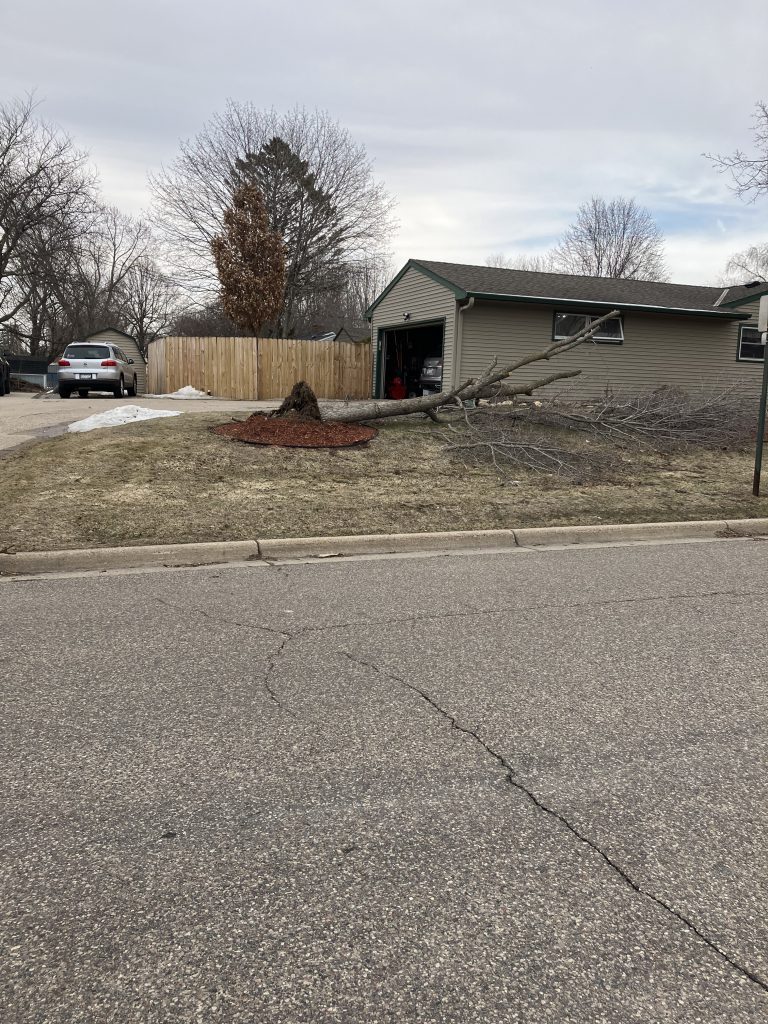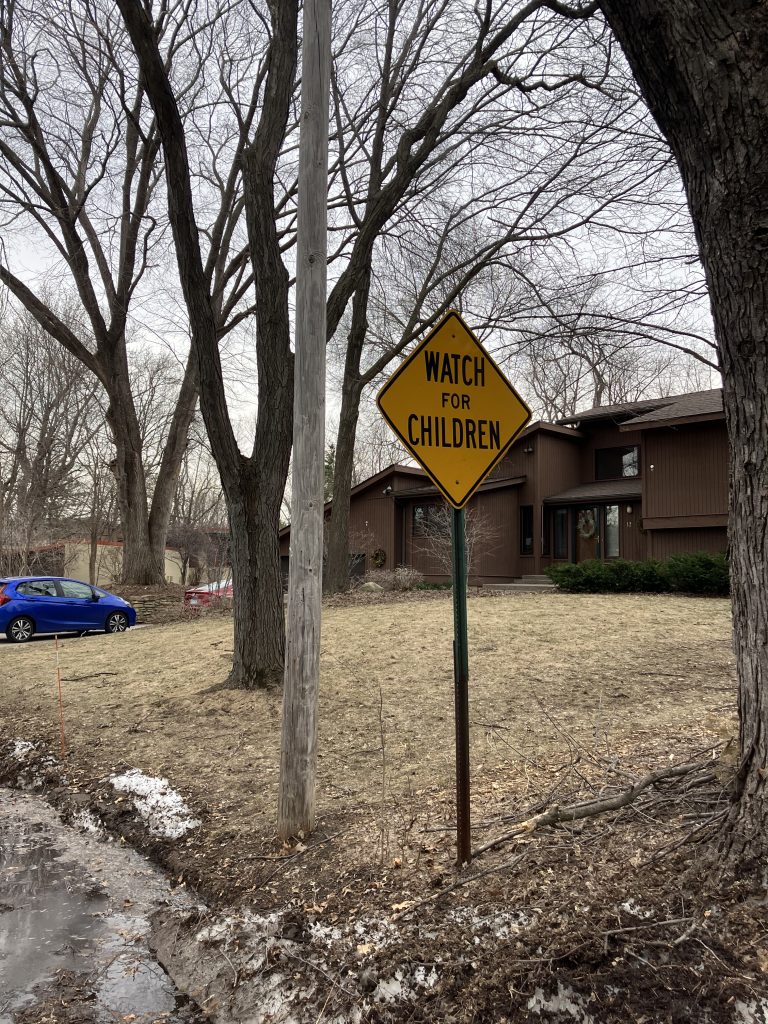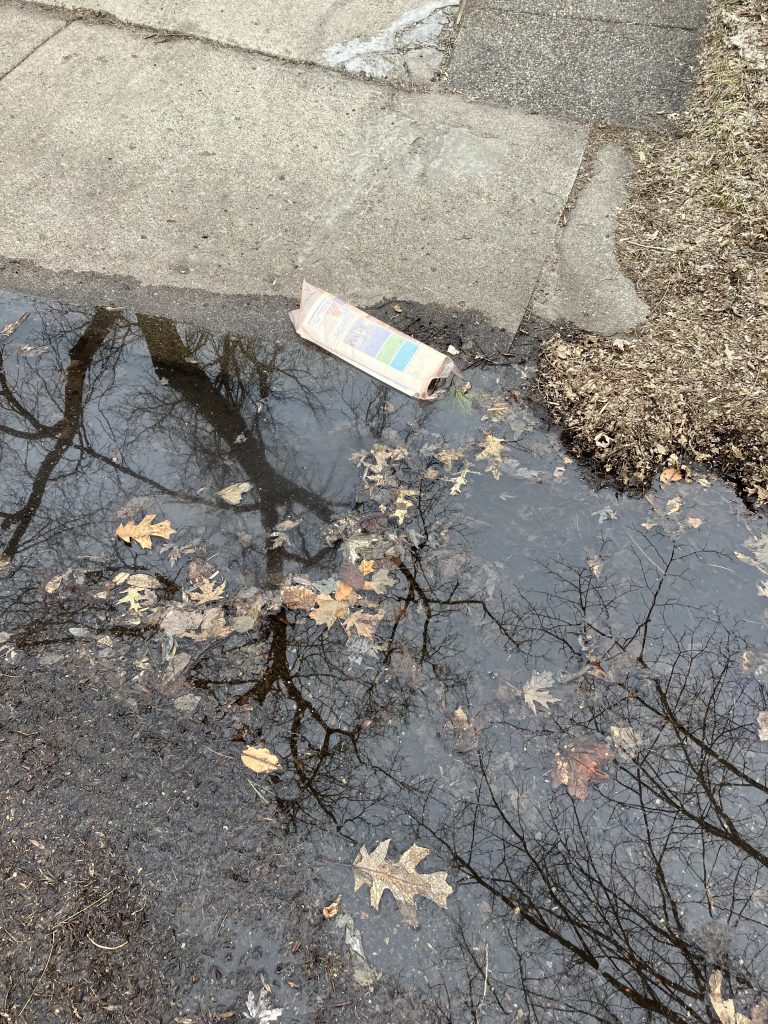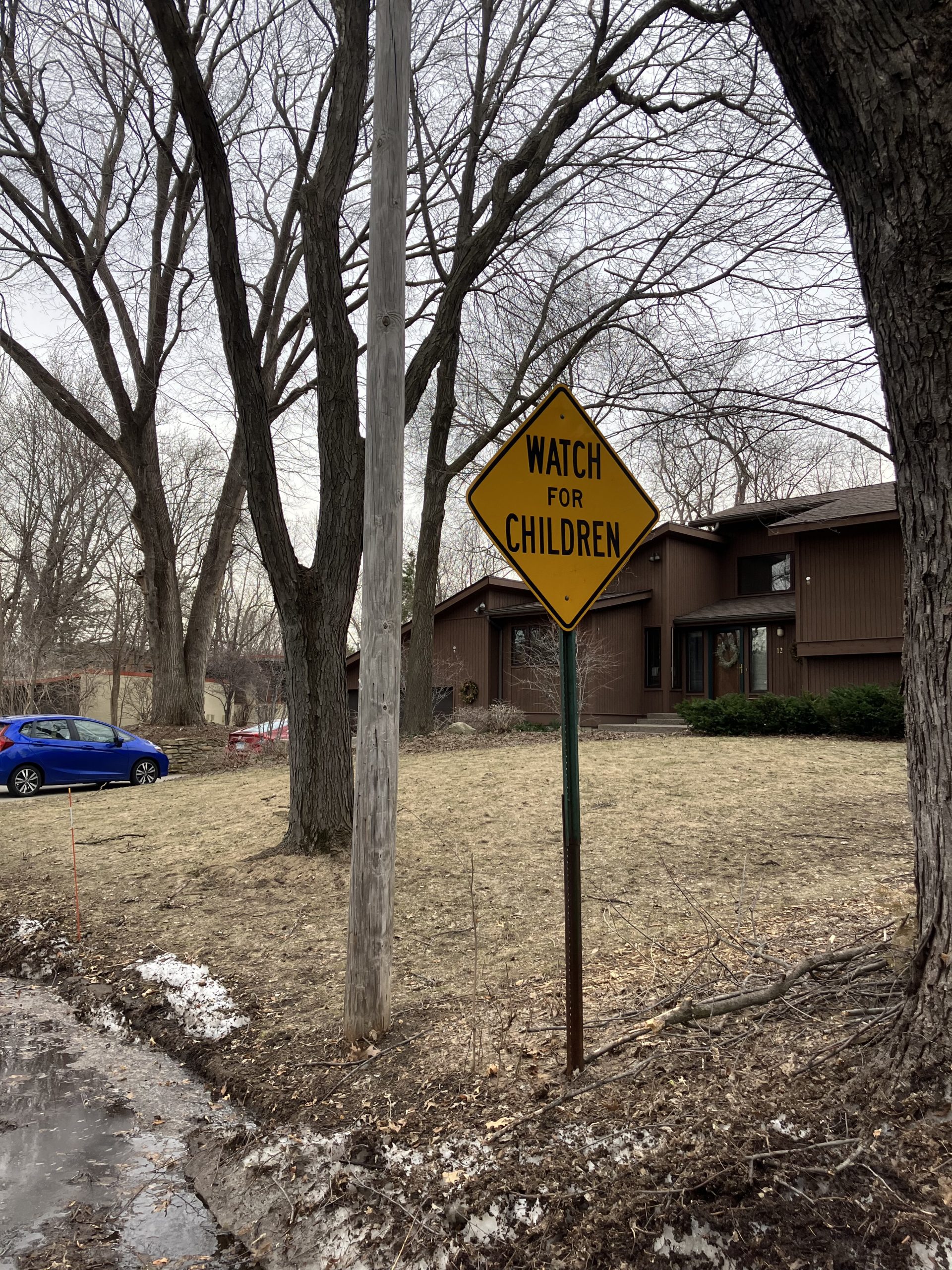On the 9th of April, Easter Sunday, I set out to walk the roughly four blocks of the Fareway neighborhood, starting at the beginning of the park outside of Northfield Memorial Pool. At the start of the walk, the air smelled of gasoline. A few children played basketball as I took out my notebook. On the opposite side of the road, a few other children skateboarded. Besides the noise of the skateboarders and basketball players, the main sounds were those of the cardinals; on the sunny Sunday, the first warm day of the season, the birds moved throughout the trees and were singing loudly to one another. The Fareway neighborhood, to my right at the start, had significantly more birds singing than the park to my left, which surprised me as I set out.
In the yards of the first few houses were the remnants of projects: one resident had their lawnmower out, another a set of bricks stacked in the yard, while another was chopping down a tree. A few of those houses had trees taken out, or cut around 10 feet up; I wondered if Emerald Ash Bore, which had just reached the city, had reached those few trees. As I walked by, on the corner of 7th and Fareway, a man came out to trim the felled tree in the front yard. We nodded as I past by.

Most of the houses on 7th were single story with large lawns. All had a relatively similar design, and all were built in the early 1950s. As I turned onto to Fareway, however, the houses became more diverse in style. The street sloped gently upwards, away from the park, and grew quiet. It was lined with grander deciduous oaks. One car drove by as I walked down Fareway; otherwise, the street looked and felt as though it had relatively little traffic from outside the neighborhood. More of these houses had bird feeders and were painted bright colors. Around 400 meters from the junction with 7th st, there was a box labeled “little free library.” 22 Fareway had a gravel driveway, a retaining wall made from local limestone, and bright shingles rather than paint or planks along on its walls. By this part of the road were two matching signs: watch for children. These signs faced opposite directions on the road.

A few of the residents of the houses were celebrating Easter, and others still had Christmas decorations in their yards. One other residence opted for another message, and outside put up a sign saying “proud union home.” Residents of the home sat in the garage as I past. The snow in the neighborhood was doing some of its final melting, and the piles still left had turned mostly into ice. A newspaper sat in a puddle created by the snow.

The end of Fareway closer to Prairie Street grew more hilly, and the houses there were both larger and more architecturally unique. 40 Fareway had a garage with no wall around it. On zillow, these houses were worth money. They bordered the Northfield golf club, and this may have raised the price.
The Northfield Golf Club, on the right side of Prairie Street as I moved north along it, was well maintained even at the beginning of spring. The club was not fenced from the rest of the neighborhood but was separated culturally. A high retaining wall preserved the club’s hills, and Prairie street had significantly more traffic than Fareway did. Two houses stood along Prairie street that I passed, but each had a driveway facing the other smaller streets perpendicular to Prairie. Both these houses were painted a bright orange red.
Park drive and Central lane had relatively similar architecture. Each had more modest houses, generally, than Fareway. Two houses had their garages open as I past, but less people were sitting in their yards than on Fareway as well. Two houses along Park drive had Christmas decorations up still, and one of those houses, 4 Park drive, with Christmas decorations had a good deal of bright chalk drawings in its driveway. 20 Park drive smelled strongly of cinnamon, and that smell wafted down the lane, reaching the next houses on either side of the street. One house had a sign in its yard, a heart with the family name in the center.
Last I meandered up 7th street. No houses had driveways leading onto 7th outside of Northfield Memorial Pool. As I entered the street, I was once again struck by how much quieter the park was than the neighborhood. The road was somewhat busy, the busiest in the neighborhood I walked, but I heard an owl along robins to my left by the houses. More of these houses were fenced than in the central neighborhood; almost none had been before. Near the end, one house had a chicken coop. A couple of the houses had basketball hoops just visible, even though they faced the park.
The neighborhood I walked generally gently sloped to the Northfield Memorial Pool Park, and grew hillier towards the golf course. Many of the trees were second growth, although a few spotted throughout the neighborhood seemed as though they were planted when the houses were built. Most houses in the neighborhood, I found out later, were built between 1950 and 1980. I wondered, as I left, what the neighborhood had looked like in the early twentieth century; I suspected it might have been farmed, although the high number of remaining small but steep bluffs caused me pause. That day, however, many residents interacted with their outdoor environment. I felt, as I left, that I was leaving a neighborhood with a distinct culture that I had just begun to familiarize myself with.
